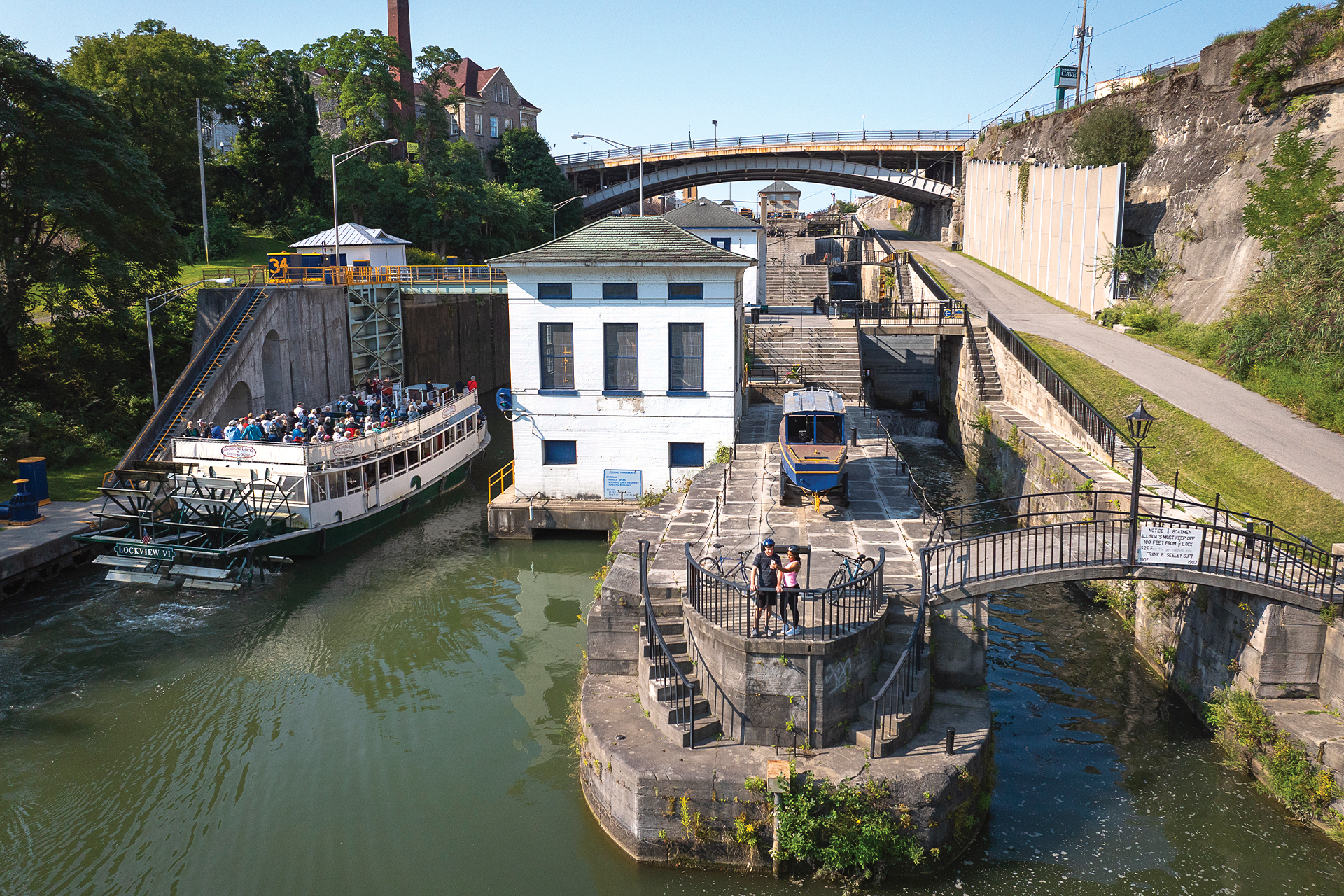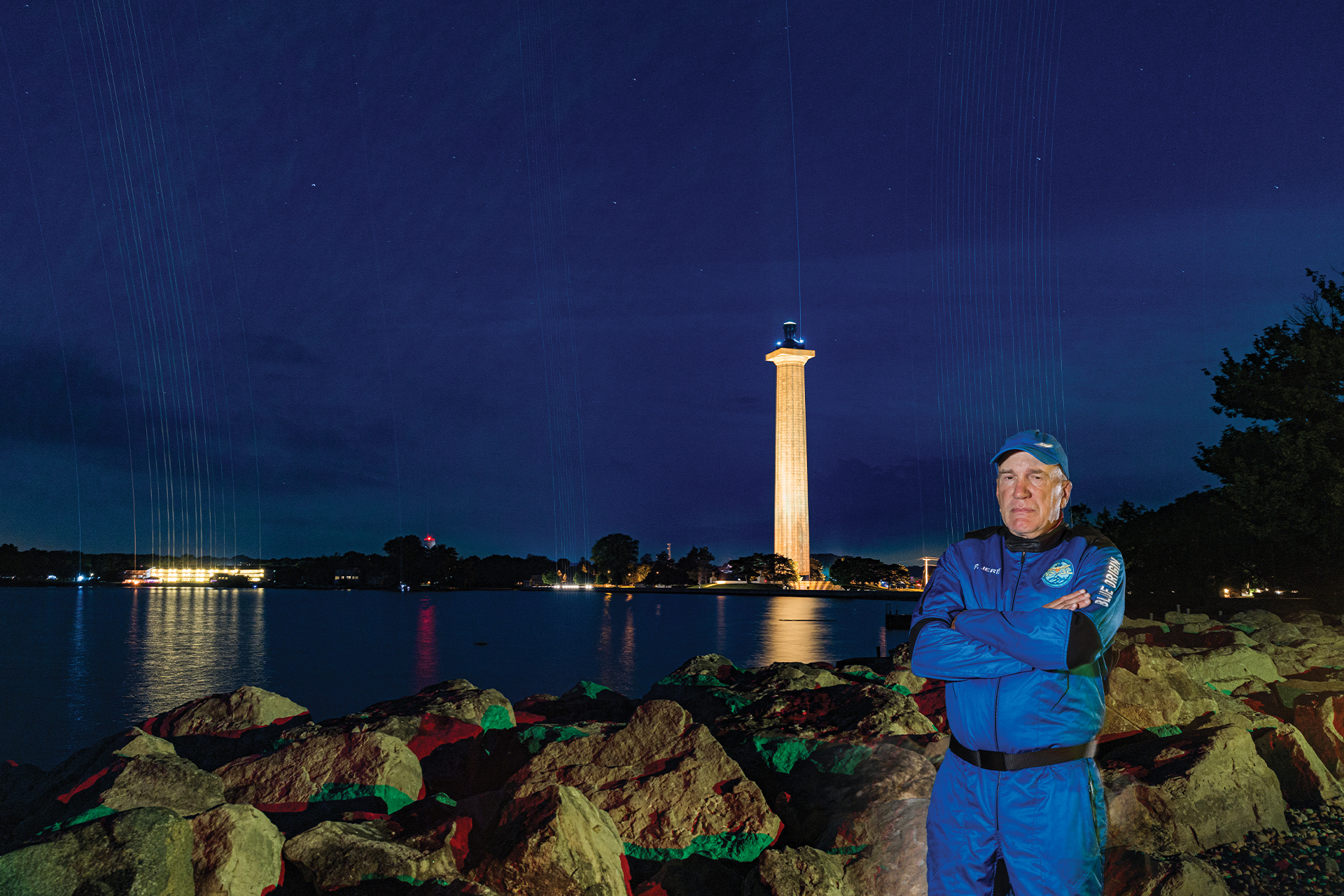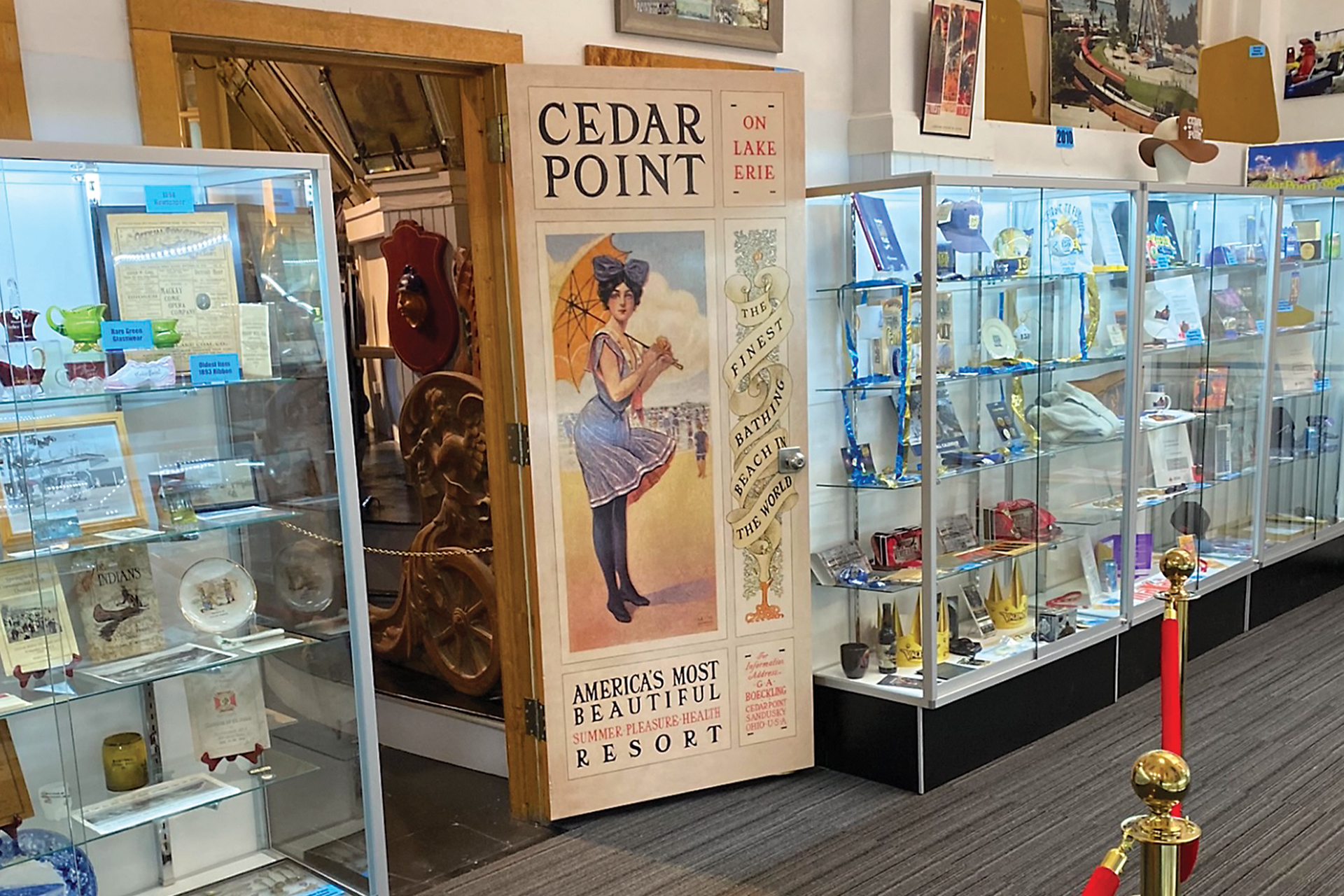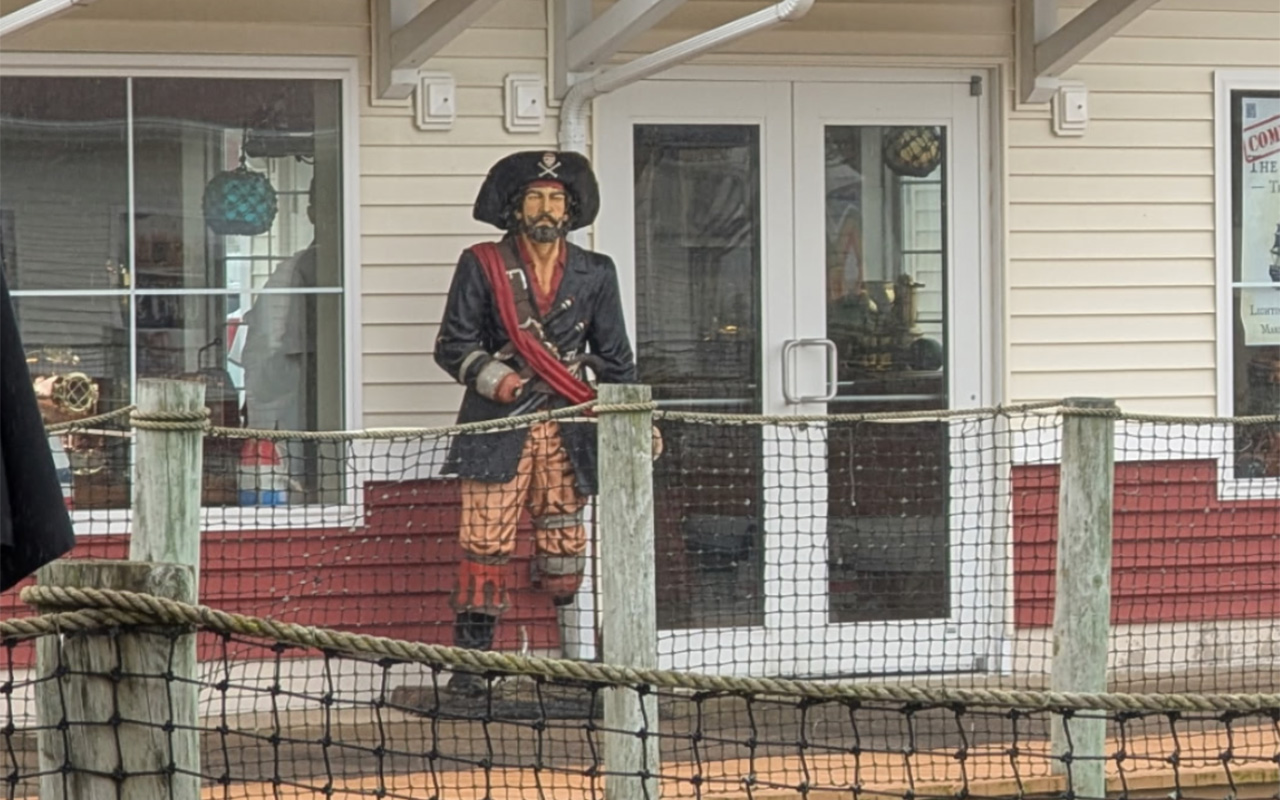Exclusive: Site of Lake Erie’s Deadliest Shipwreck, the Griffith, Discovered
Local diver Mark Lasmanis tells Lake Erie Living how he found the ship’s debris field — and what it tells us about the hundreds of immigrants who perished there.
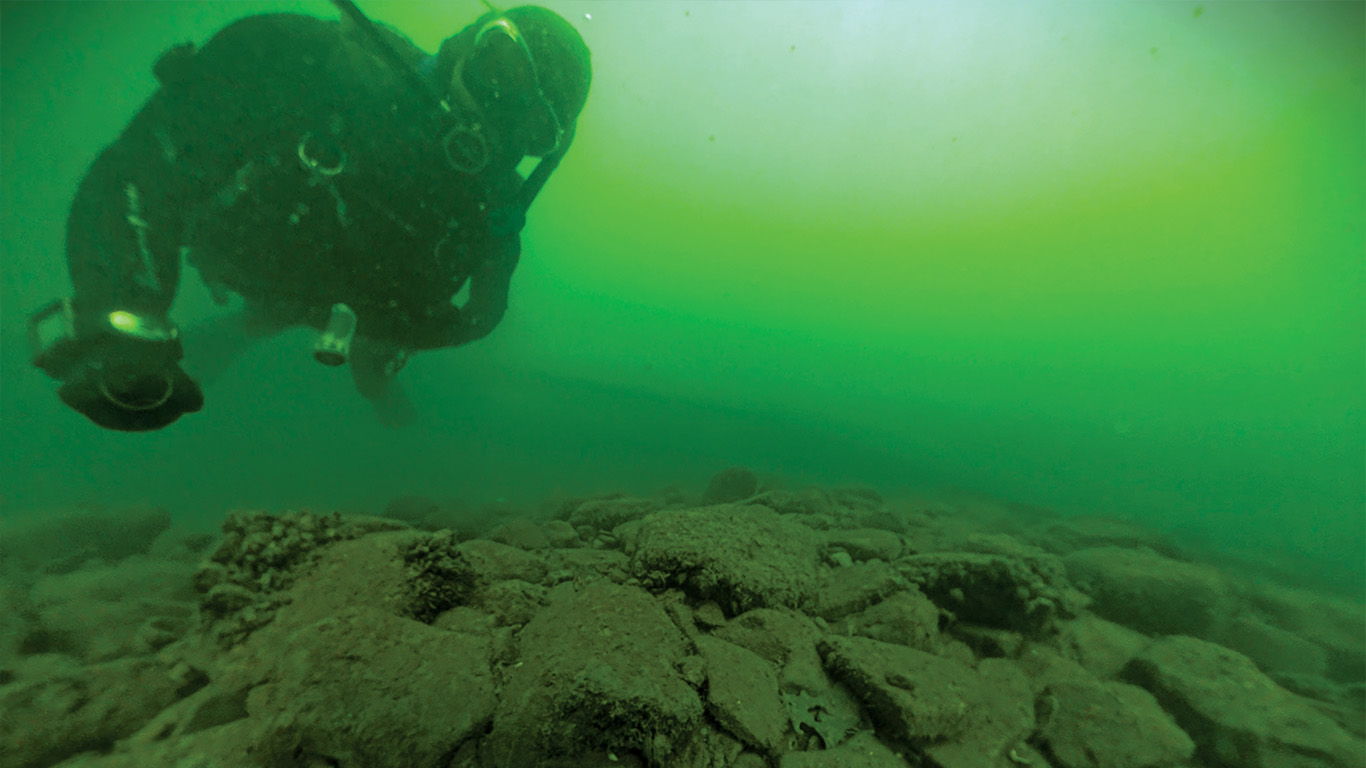
Mark Lasmanis was on his first dive of the year off the shore of his home in Willowick, Ohio, when he saw what appeared to be an expansive debris field. About 18 feet down, the lake floor was covered with worn and rusted nails, rods and bolts. He grabbed his underwater tablet, quickly scrawled his suspicion, and turned to show his dive buddy.
“Wreck??”
The first thing Lasmanis picked up was a key that, although broken, looked untarnished. Could it be, he wondered, from the shipwreck he grew up hearing about, said to have happened in this same location, the SS G.P. Griffith? His thoughts quickly took off.
What did that lock? Was it a big trunk? Was it someone’s cabin? Whose key was it? Was it an immigrant’s journey? What were they locking up and hoping to bring with them to their new life?
“There was just something about it,” says Lasmanis, who grew up snorkeling Lake Erie and was scuba-certified last year. “It just seemed unique — a key in Lake Erie — among all of this rusted metal and then to find a shiny brass key down there.”
Built in Maumee, Ohio, in 1847, the Griffith was a steamship carrying more than 300, mostly European, immigrants westward on Lake Erie in the predawn hours of June 17, 1850, when it caught on fire and got stuck on a sandbar off the coast. Passengers panicked and threw their trunks, filled with clothing and valuables, overboard and jumped in.
Because most didn’t know how to swim, and many were believed to have been weighed down by coins sewn into their clothing, hundreds of immigrants died and were buried in a mass grave near the shore. Only several dozen passengers survived. It’s the deadliest shipwreck on Lake Erie and the third worst on the Great Lakes.
Still, Lasmanis was far from certain he’d found the shipwreck — until he returned the next day and came across more evidence.
“I started finding some other pieces of interesting cast iron stuff when I glanced over and I saw a coin sticking out,” he says. “I don’t even know how to say it, kind of a thing of joy and I just ‘hurrahed’ underwater with the scuba equipment on with the regulator and blew bubbles out — like, Wow, I can’t believe this! Is this real?”
Knowing how quickly the lake changes, Lasmanis took the coin to prevent it from being covered by shifting sediment. Before picking it up, he documented where he found it by recording video. Once on land, he saw it was an 1815 Brazilian silver coin, which is significant because, until now, most immigrants aboard the ship were believed to have come from Europe.
Since then, Lasmanis has found more items that seem to be from the mid-19th century, including irons, tools and decorative cast iron. The artifacts with the most obvious ties to the Griffith are those that appear damaged from high heat, including several pieces of flatware melded together.
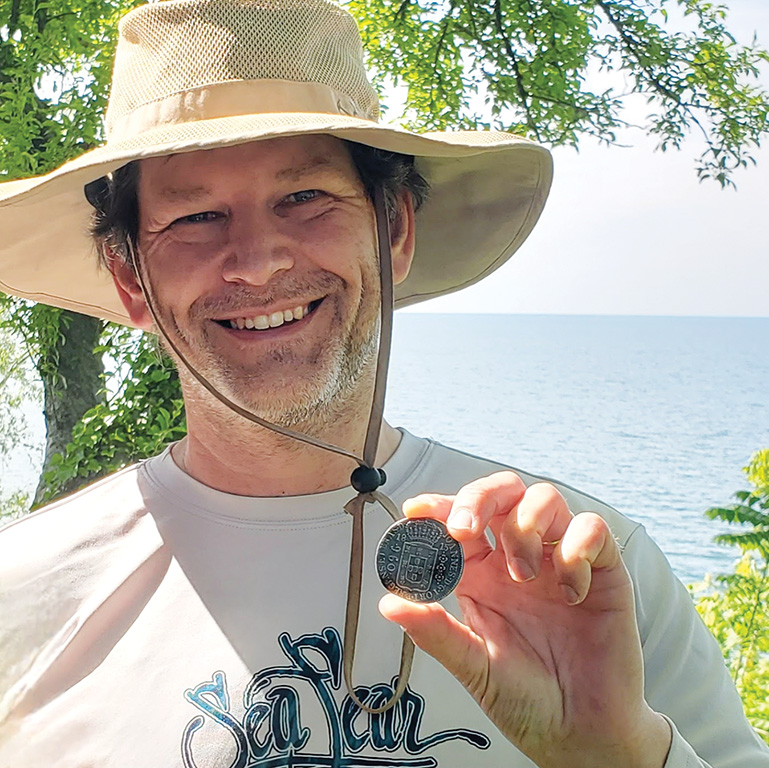
Alan Hitchcox, the vice president of the Willoughby Historical Society in Ohio, believes Lasmanis has found items from the Griffith. “I’d say I’m 90% sure. Most of what we find in retracing history is circumstantial evidence that leads us to conclude a high probability of proof.”
Lasmanis has also shared artifacts and photos with the Ohio State Historic Preservation Office. There is enough evidence to warrant adding the discovery to official state records, according to an email from archaeology survey and data manager Brent Eberhard.
Because the state has no plans to conduct an official archaeological survey of the debris field, Lasmanis is the only person working to document the site and preserve its artifacts. (Ohio law requires a permit to remove or disturb items from a shipwreck but does not specifically address items not located near the sunken watercraft.) Lasmanis says he’s already contacted several maritime museums and plans to donate artifacts of interest.
And there may be more to come. Lasmanis is still diving to the site. Each time, he returns with more photos and video documenting the debris field — and more certainty.
“I am a technical and analytical person,” he says. “Considering the location, variety of items, some with dates and or heat damage … it all points with almost certainty to the events of the Griffith in 1850.”
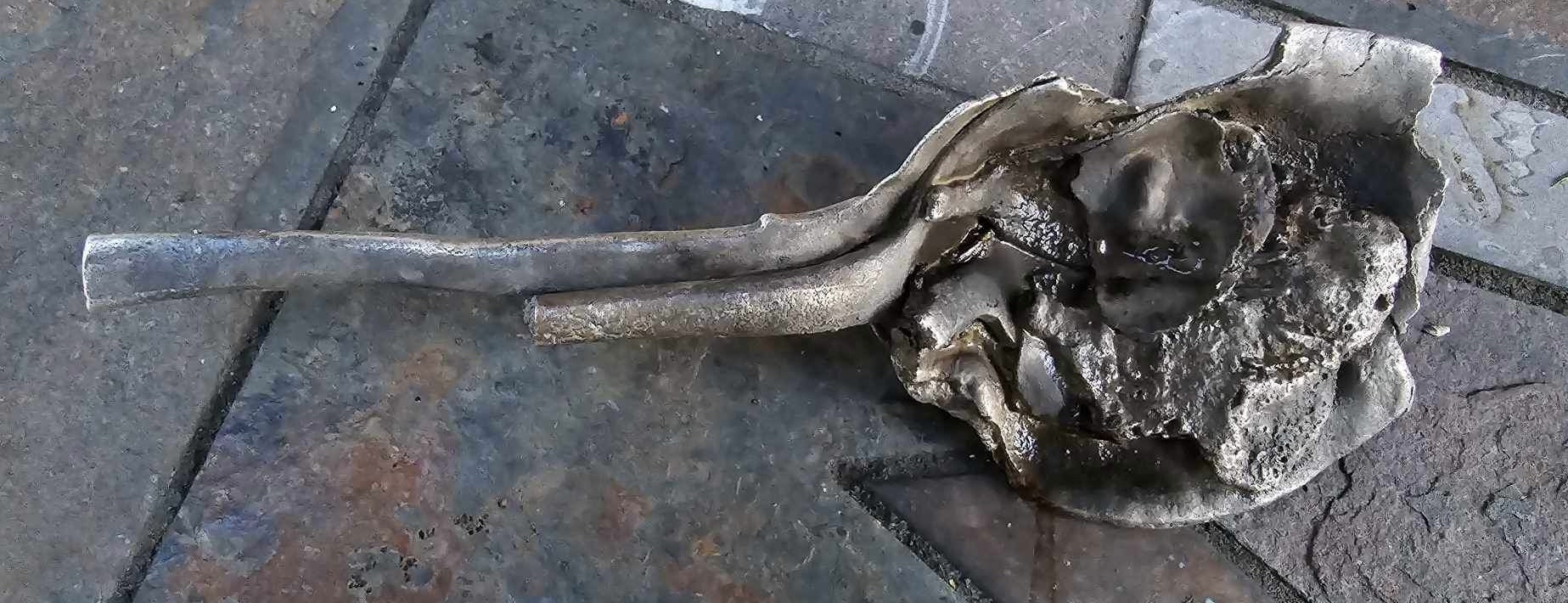
So What Happened to the Ship?
If the debris field of the Griffith has been found, it raises a few more questions. What's left of the ship? Where is it located? And has anyone tried to find it? According to Cleveland newspaper reports from the time, the ship burned nearly to the water’s edge.
In the morning following the disaster, several ships brought survivors from the wreckage to downtown Cleveland, including the steamer Delaware that also hitched itself to the remains of the Griffith’s hull and tugged it closer to shore.
According to the Cleveland Herald on June 20, 1850, “The fire was of tremendous heat, and apparently burned every thing [sic] combustible down into the hull. The outside planks and timbers and portions of the wheel alone remain. The water is now just over the boilers, and a diver in search of the safe yesterday, brought up the ruins of the clock in the Clerk’s office, a mass of melted glass, wheels, etc. It told the last moment of time for many on that fatal morn.”
It went on to say, “It is understood efforts will soon be made to raise the wreck. The smoke pipes are still standing.”
For several weeks after the fire, the blackened Griffith peeked out of the waters of Lake Erie just offshore of Willoughby (now Willowick, Ohio) as a somber reminder of the hundreds of lives lost. During that time, attempts were repeatedly made to bring back bodies to be buried and retrieve personal belongings.
Then, on July 1, two scows were sent out to raise the Griffith. However, a treacherous squall churned up the water near the shipwreck and capsized the scows. A man, named Wallace Ames, from Fairport, Ohio, died — another tragic victim of the Griffith. “There were nine men and [sic] boy saved by clinging to the rigging of the wreck,” according to a July 3, 1850, article in The Evening Post.
Once weather conditions calmed, the scows were sent out again to move the ship out of the 10-foot-deep waters where its remains were lodged and to attempt to bring it to shore for possible salvage of large mechanical parts.
This is where newspaper reports thin out, along with the exact date the Griffith remains were moved, and the exact location they were moved to. However, based on accounts from local divers searching for the wreck over the years, it appears part of the Griffith made it a few miles eastward. Because of the burned and destroyed condition of the hull, and the several attempts to move it, it’s believed pieces of the ship are scattered across the bottom of Lake Erie along this route, with the largest portion of the ship having been dragged into deeper water near the mouth of the Chagrin River. Some have said timbers and machinery are still visible.
If there is any wood left, it is likely heavily decayed and covered in sediment — and no part of the actual wooden ship has been officially recovered.
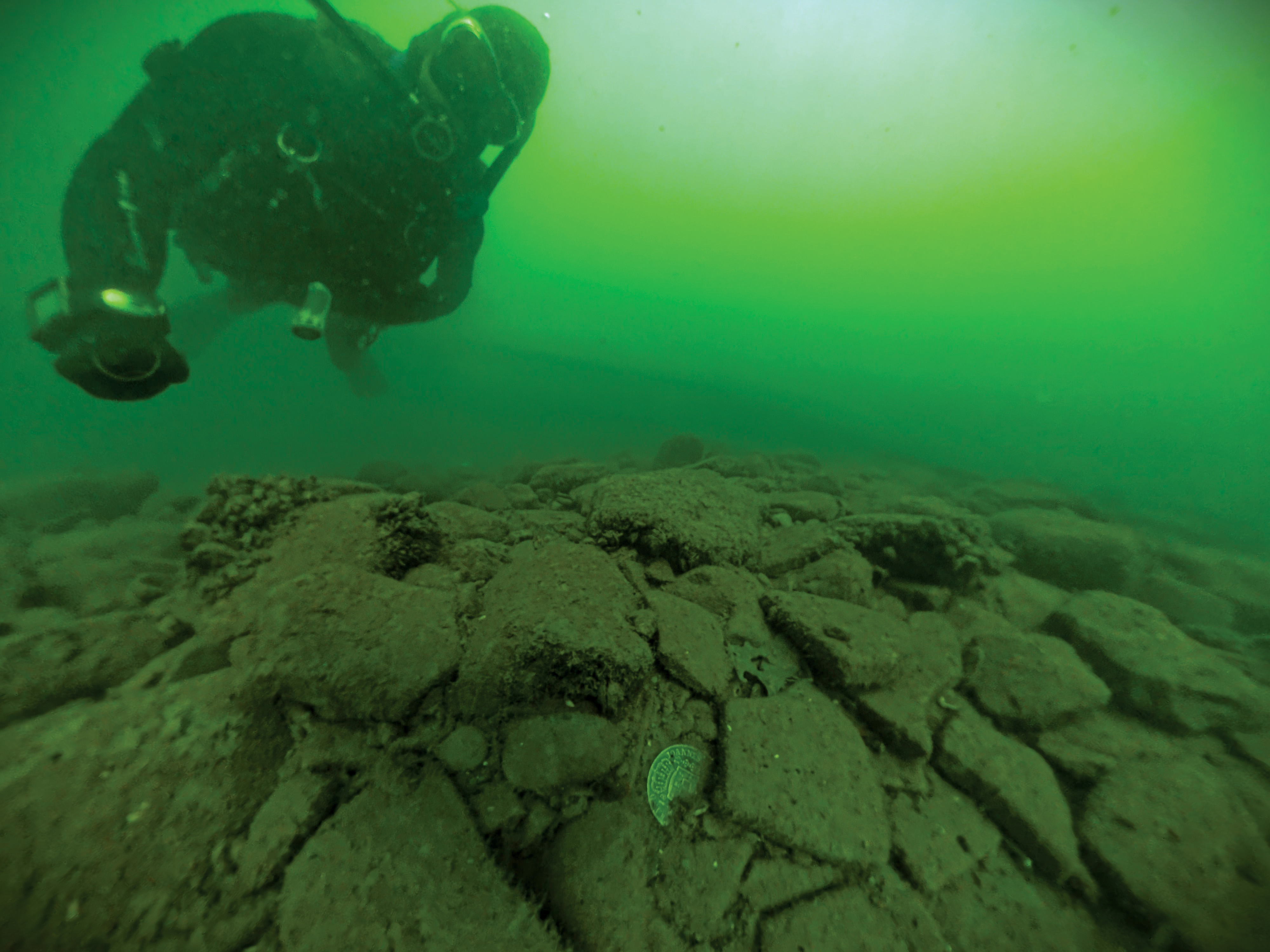
The Story Continues
“Lost Lake Erie” author Jennifer Boresz Engelking grew up near the shipwreck in Willowick and has written about the Griffith in several of her books, including “Hidden History of Lake County, Ohio” and “Lost Lake County, Ohio.” When Mark Lasmanis contacted her to ask if she was interested in hearing about his discovery, her immediate response was, “I am absolutely interested!”
After seeing the artifacts and learning where they were found, Engelking says, she was certain from her research that Lasmanis had discovered the site of the Griffith shipwreck — she also knew she had the idea for her next book. “I have to continue telling the story of the immigrants who were aboard that day,” she says.
Aside from the discovery of the Griffith bell in the 1970s (on display at the National Museum of the Great Lakes in Toledo, Ohio) Engelking believes the new finds are the first artifacts anyone has seen since the tragedy happened 174 years ago — and many come directly from the immigrants who perished.
“These remnants give us glimpses of the people who were aboard the ship … in a sense giving them a voice and letting us know where they came from, what they carried, and what was important to them as their journey to start a new life in America was tragically cut short,” she says. “It’s that connection to our past, believed to have been lost, that is perhaps the greatest treasure.”
Jennifer Boresz Engelking is writing a book that will include the story of the Griffith and Lasmanis’ underwater findings. For more information go to jenniferboresz.com. To connect with Lasmanis, go to greatlakesvista.com.
Stay on top of everything Lake Erie has to offer — all year long — by subscribing to our free The Splash newsletter. It’s your guide to the best food, drinks, parks, beaches, shopping, festivals, music and more.

